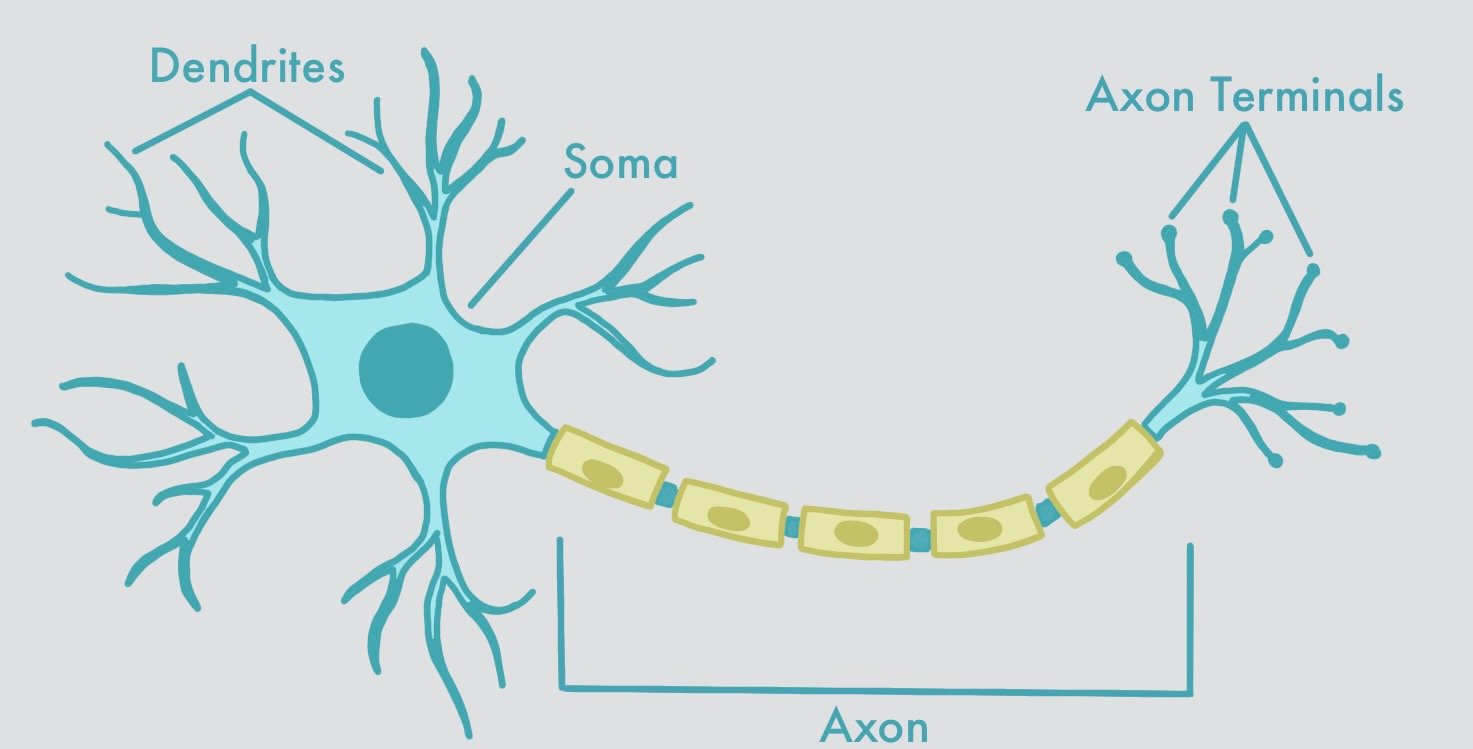What are Neurons?
Neurons are the cells responsible for communicating information in the nervous system. These cells, as known as the fundamental units of the nervous system, are what make us human. Neurons can come in all different shapes and sizes, and have various roles within the body.
Anatomy of a Neuron
A neuron can be broken down into four different structures:
Dendrites: receive information from other tissues or neurons
Soma (cell body): contains genetic information (in the nucleus), provides energy and maintains the neuron’s structure
Axon: the long, thin section of the neuron, along which action potentials are generated to communicate information
Axon terminals: where neurotransmitters are housed, which are chemical signals that are used to communicate information between neurons and tissues in the body
Types of Neurons
There are many different types of neurons, each of which a specific role in the nervous system. Two of the most common are sensory and motor neurons:
Sensory neurons: these neurons are responsible for recognizing and communicating sensory input in our environment. Sensory input can be physical (touch, sound, light) or chemical (taste, smell). Regardless of the type of sensory input, sensory neurons send this information to the brain, which responds accordingly.
Motor neurons: these neurons are responsible for movement, both voluntary and involuntary, communicating information from the brain to the muscles in our body. Voluntary movements are movements that we consciously make (moving our arms and legs), while involuntary movements are subconscious (breathing, heart rate, digestion).
One example are sensory neurons, which communicate information from the environment to our brain. Olfactory sensory neurons are the neurons in your nose responsible for detecting odors in the environment. These neurons live in the olfactory epithelium, a thin layer of cells that line the inside of your nose.
There are roughly 100 billion neurons in the nervous system, receiving information from the outside world, communicating information within and beyond the body, and making us who we are.


